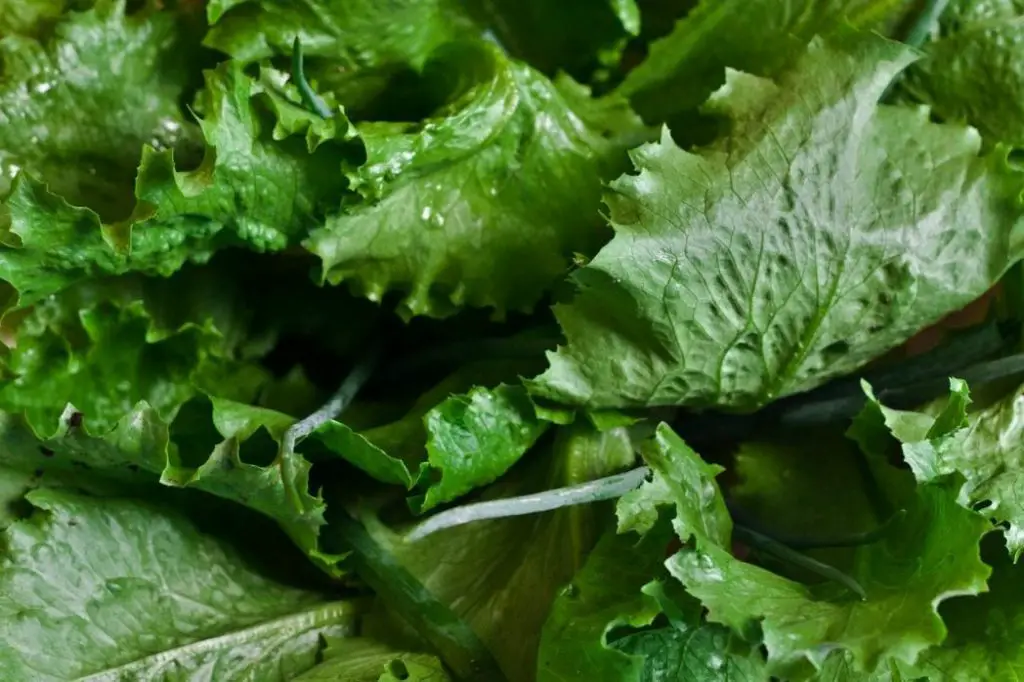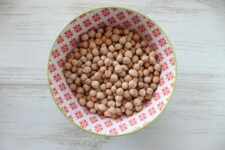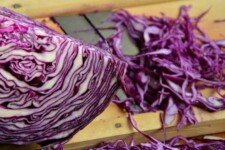Can Dogs Eat Lettuce? (Does It Cause Digestive Problems?)
Lettuce is nutrient-dense, and it is rich in calcium, vitamin C and other minerals and minerals that keep the human bodies healthy – but what if your dog has eaten it?
Not all foods that humans eat are safe for dogs, and if your dog has just found your groceries and munched a pile of lettuce you may be concerned.
How safe is lettuce for dogs to eat?
Lettuce, especially the iceberg, arugula, and romaine varieties, are safe for dogs – and are unlikely to have any negative effects on them. It makes a great low-calorie treat for overweight dogs that are addicted to unhealthy high-calorie treats.
Let’s take a look at how much lettuce is safe for dogs, what happens if it’s in a salad, and ways to safely give lettuce to dogs.

Is Lettuce Good For Dogs?
Approximately 90% of lettuce is water, and the remaining component is the vegetable portion.
That aside, lettuce is nutrient-dense, and will have a positive effect on your dog’s health.
It contains Vitamin A, C, and K, and is rich in beta-carotene, a red-orange pigment that is converted into a vitamin.
Lettuce is rich in dietary fiber, and it is sometimes added in homemade dog food as a source of fiber, which helps in digestion, and make stools firmer to help your dog poop easier.
Even though lettuce has a nutritional benefit to dogs, it should be given in small quantities and not as the main meal.
Giving your dog too much lettuce might cause digestive issues since their stomach takes a longer time to process the fibers.
It can also cause diarrhea and vomiting when the digestive system is not able to handle the leafy vegetable.
Is Lettuce Safe For Dogs?
Although it is safe to add lettuce to your dog’s bowl, there are several safety concerns you should observe.
First, lettuce is fibrous, and some dogs may have difficulties if digesting it.
When served whole it will be difficult to break the big lettuce pieces into chewable small pieces, especially for small dogs, so cut it into smaller bits to make it easy for your dog to chew and swallow.
This will help reduce cases of digestive issues because the digestive system is unable to handle big lettuce pieces.
- Another safety concern that you should take into account is where the lettuce originates from, as your dog could get sick from contamination in dirty lettuce.
While you may be tempted to give your pup leftover salads or mixed-vegetable salads, it is not always a good idea.
Leftover salad may contain other ingredients such as onions and walnuts that are harmful to dogs.
Onions are known to be toxic to dogs, which may lead to a condition known as hemolytic anemia.
Raw Vs Cooked Lettuce: Which Is Best?
Should dogs eat lettuce when raw or cooked?
Either option works fine for dogs, but it also depends on what form your dog prefers.
Raw Lettuce
Raw lettuce has a crunchy feeling that your dog will enjoy, even the pickiest pooches.
The good thing about serving it raw is that your dog gets all the nutrients as they are, you can serve the lettuce as a solo salad, or as a top-up to their regular diet.
If your dog has never eaten lettuce before, go slow on it to avoid digestive issues, so just chop a few lettuce leaves and serve them in the feed bowl.
Serving too much of this leafy vegetable may cause tummy issues, and result in diarrhea and/or vomiting.
Cooked Lettuce
If your dog is having problems digesting raw lettuce, then try giving them cooked lettuce.
The best way to cook lettuce is to steam it under low heat to make it soft while retaining the most nutrients.
When steaming lettuce, keep the vegetable as natural as possible.
Don’t add any spices to the vegetable since your dog will still eat the lettuce as it is.
Once ready, shred the lettuce into small pieces or puree it and add as a top-up to their meal.
What Type Of Lettuce Can Dogs Eat?
Dogs can eat the iceberg, arugula and romaine lettuce varieties.
Nutritionists advise that dog owners should stick to the darker varieties since they tend to be more fibrous and nutrient-dense to provide maximum benefit to your dog.
Since it’s a low-calorie vegetable, lettuce is a healthier snack than the commercial high-calorie treats that may contribute to excess weight gain.
Veterinarian’s Perspective On Dogs Eating Lettuce
While vets approve serving lettuce to your dog, they argue that lettuce does not have enough nutrients to be beneficial to your dog.
Dr. Jerry Klein from the American Kennel Club argues that there are better alternatives to lettuce that can provide even greater benefits than what lettuce provides.
- However, Klein claims that lettuce can still help in easing constipation, aiding digestion and lowering the dog’s blood pressure.
The Leafy End
As a low-calorie sugarless vegetable, lettuce is safe for dogs and has a nutritional benefit to dogs.
It’s rich in essential minerals and vitamins which promote the dog’s immune system.
Lettuce is a fibrous vegetable that can help ease constipation and in assisting in the digestion process.
Just like any other new food, you should introduce this vegetable to your dog in moderation to avoid causing tummy issues.
Also, chop the lettuce into small chewable pieces to make it easy to digest them and avoid chocking.
Can Dogs Eat These Other Foods?
- Can Dogs Eat Cabbage?
- Can Dogs Eat Chickpeas?
- Can Dogs Eat Coconut?
- Can Dogs Eat Bell Peppers?
- Can Dogs Eat Black or Green Olives?
Sources
https://www.ncbi.nlm.nih.gov/pmc/articles/PMC6055891/
https://www.akc.org/expert-advice/health/world-veterinary-day-dr-jerry-klein/




